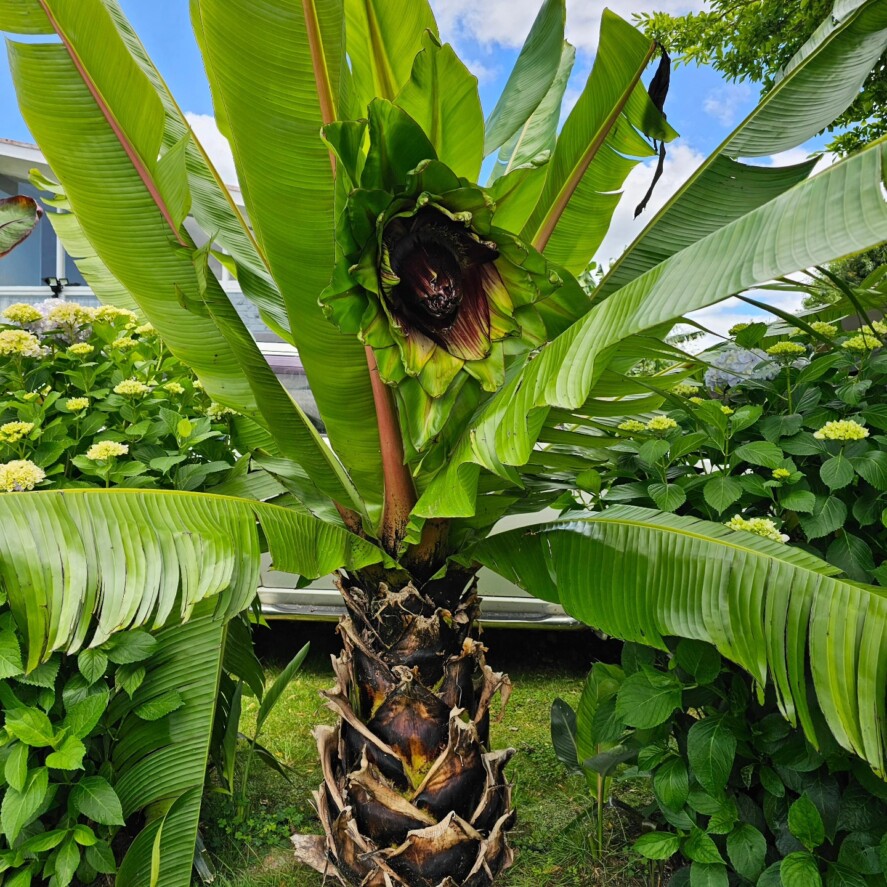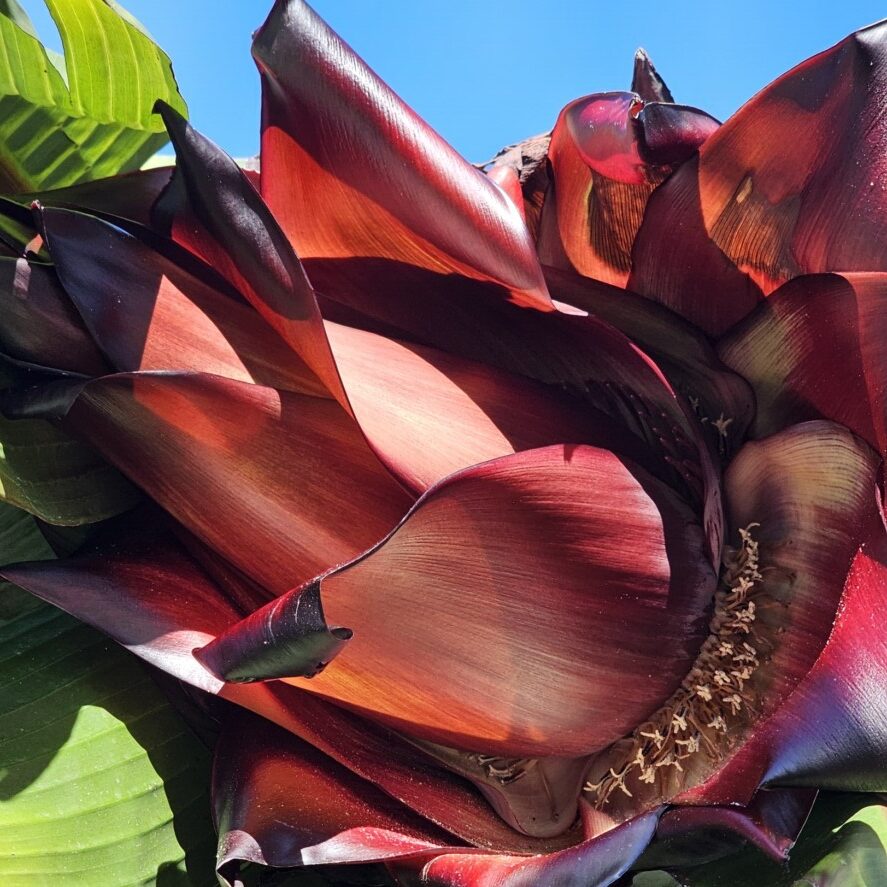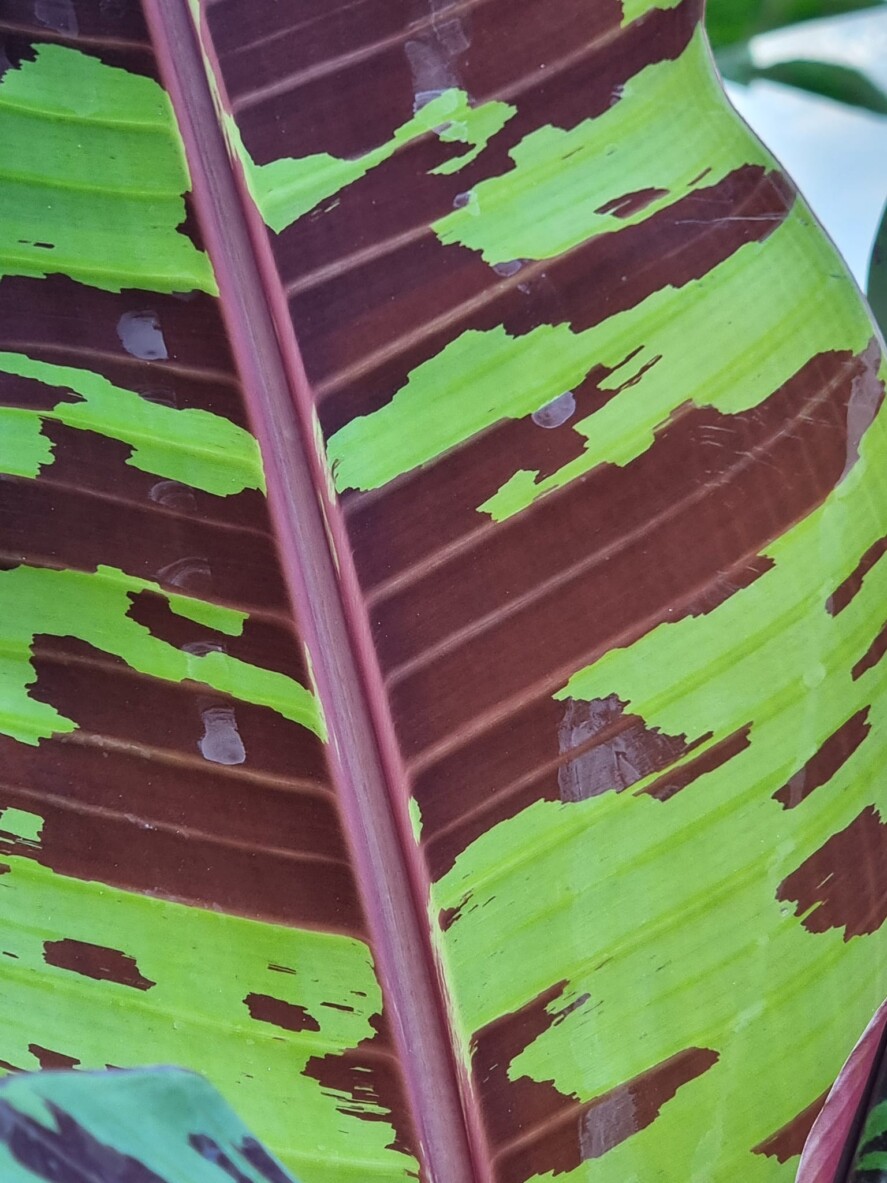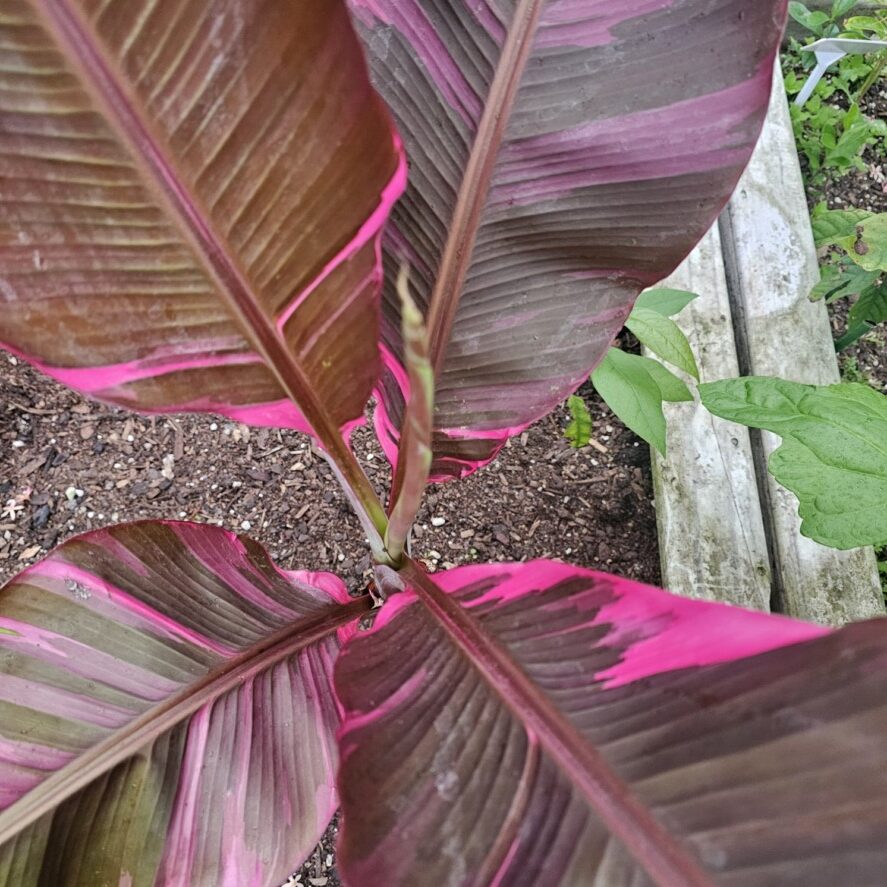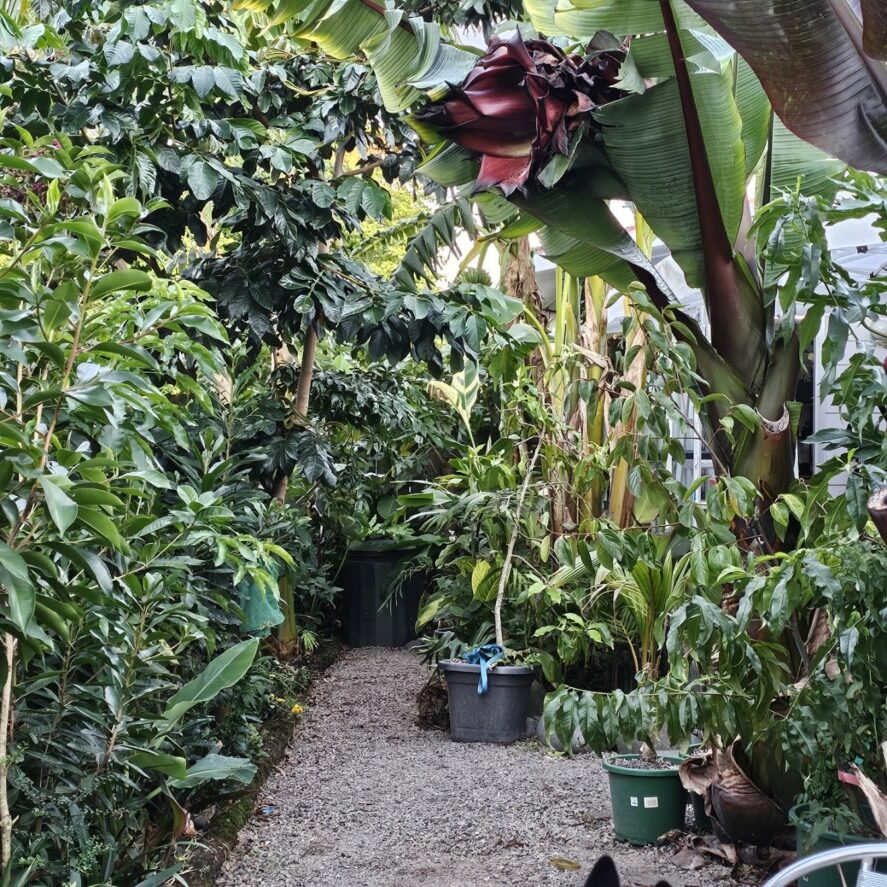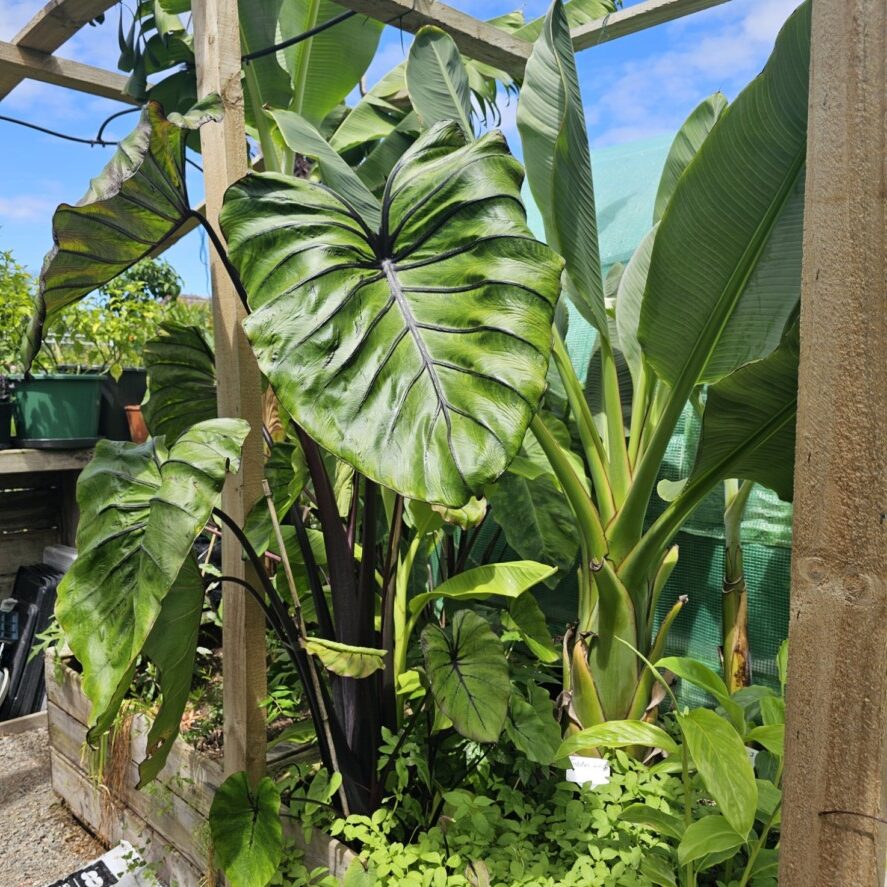-
Troppo Plant & Garden Articles
- Te Puke Region
- TROPPO’s Food Forest in Te Puke, BOP (www,foodforest.org.nz)
- Troppo’s Plant Collection
- TROPPO's Nursery Directory
- Food Forests of New Zealand (www.foodforests.nz)
- Nursery Map - Plant Suppliers of NZ Directory (www.nurserymap.nz)
- Kids Garden Corner
- New Zealand Garden Bird Survey
- New Zealand Garden Groups
- Delicious Recipes
Banana ‘Musa Williams’ – The Compact Banana with High-Yield Potential
Over time, you may have wished for a banana variety that combines high yield with a manageable size for your garden or indoor space. The ‘Musa Williams’ banana offers just that, making it an ideal choice for both seasoned gardeners and beginners alike. This compact cultivar not only produces an impressive number of fruit but also brings a delightful tropical touch to your surroundings. In this post, you’ll discover the unique features of ‘Musa Williams,’ its cultivation requirements, and tips for maximizing your harvest.
Origin and Development
Your journey with the ‘Musa Williams’ banana begins with its intriguing origin and development. This compact banana cultivar has gained prominence for its high-yield potential. The result of careful selection and cultivation, ‘Musa Williams’ is designed to thrive in diverse environments while providing excellent fruit quality, making it an attractive choice for both home gardeners and commercial growers.
Genetic Background
Development of the ‘Musa Williams’ banana primarily stems from various Musa species, particularly focusing on traits that enhance yield and resilience. Its genetic makeup intertwines the desirable attributes of conventional bananas, allowing it to flourish under different climatic conditions while producing sweet, flavorful fruit that caters to consumer preferences.
Breeding History
Originating from a targeted breeding program, ‘Musa Williams’ has incorporated specific characteristics aimed at improving banana cultivation. The breeding process focused on cross-pollination among high-yield bananas, resulting in a variety that not only withstands pests but also adapts well to varying soil types.
Understanding the breeding history of ‘Musa Williams’ gives you insight into its resilience and productivity. The cultivar was developed through a series of strategic crosses, emphasizing key traits such as disease resistance and compact growth. This careful selection process aimed to create a banana variety that not only meets commercial demands but also appeals to the home gardening market, offering exceptional quality and yield even in limited spaces.
Plant Characteristics
Assuming you are considering the ‘Musa Williams’ banana, you will find it exhibits distinct characteristics that set it apart. This compact banana variety thrives in smaller spaces yet boasts significant yield potential, making it ideal for home gardeners and urban settings. Its resilience and adaptability to various conditions contribute to its appeal in both tropical and subtropical climates.
Growth Habit and Size
Across various environments, ‘Musa Williams’ demonstrates a dwarf growth habit, typically reaching heights of 3 to 5 feet. This compact stature does not compromise its productivity; instead, it offers an abundance of fruit despite its relatively small size. This adaptability makes it suitable for containers or smaller garden plots.
Leaf and Stem Features
Leaf structures of ‘Musa Williams’ are broad and vibrant, contributing to the plant’s aesthetic appeal. The erect stems, or pseudostems, are sturdy and support the banana bunches as they develop, ensuring stability even under the weight of the fruit.
At a closer glance, the leaves emerge in a rich green hue, creating a lush and tropical appearance. The pseudostems are thick, round, and can vary in color from green to purple, enhancing the visual interest of your garden. You will appreciate the way these characteristics contribute not only to the overall beauty of the plant but also its health and productivity, allowing for vigorous growth that supports high yields.
Cultivation Requirements
If you are looking to cultivate the ‘Musa Williams’ banana, it is vital to understand its specific growth needs. This compact banana variety requires adequate sunlight, moisture, and well-draining soil to thrive. Ensuring optimal conditions will enhance your chances of a successful harvest, allowing you to enjoy the fruits of your labor.
Climate and Soil Preferences
For ‘Musa Williams’, a tropical or subtropical climate with temperatures between 75°F to 95°F is ideal. Well-draining, fertile soil enriched with organic matter will drive healthy growth and high yield.
Planting and Spacing
Along with proper climate and soil, planting ‘Musa Williams’ bananas requires careful spacing for optimal growth. You should space each plant approximately 5 to 7 feet apart to allow for their natural spread and avoid competition for resources.
And to ensure healthy growth, it’s beneficial to dig a hole that is about twice the size of the plant’s root ball. Adding organic compost helps improve soil fertility. Water your newly planted bananas deeply, and mulch around the base to maintain moisture and suppress weeds. Proper spacing not only promotes airflow but also enhances sunlight exposure, which is vital for the fruit development of ‘Musa Williams’.
Fruit Characteristics
For those seeking an exceptionally fruitful banana variety, ‘Musa Williams’ stands out with its compact growth and high-yield potential. Each plant produces abundant bunches of bananas, ensuring that you enjoy a generous harvest while managing limited space. With its resilience and adaptability, this banana plant is perfect for both home gardens and commercial production.
Bunch Size and Structure
Fruit from the ‘Musa Williams’ variety typically forms large, well-structured bunches that can contain numerous individual bananas. This compact arrangement not only maximizes your yield but also allows for easier harvesting and handling due to its manageable size.
Fruit Quality and Taste
On tasting the fruit of the ‘Musa Williams,’ you will find a delightful balance of sweetness and texture that is sure to impress. The firm, creamy flesh offers a rich flavor profile that makes it ideal for eating fresh or incorporating into various dishes.
Quality plays a vital role in the overall experience of ‘Musa Williams’ bananas. Their unique flavor and texture make them a favorite choice for many. You’ll appreciate the banana’s natural sweetness and slight tang, which can enhance any dish or smoothie. Additionally, these bananas remain firm for a longer period, allowing you to enjoy their quality for days after harvest.
Production Performance
Despite common beliefs about banana production, ‘Musa Williams’ showcases remarkable efficiency and adaptability. With the ability to thrive in various soil types, this compact banana variety demonstrates impressive resilience against unfavorable conditions. You will find that its robust nature leads to increased adoption among commercial growers looking to maximize their crop output. The consistent performance under diverse environmental stresses sets ‘Musa Williams’ apart as a dependable choice in your banana farming endeavors.
Yield Potential
Production of ‘Musa Williams’ reveals an impressive yield potential. Under optimal growing conditions, this variety can produce upwards of 40 to 50 tons per hectare annually. This abundant output not only enhances your profitability but also positions you advantageously in the competitive market for banana production.
Growth Cycle Duration
Cycle times for ‘Musa Williams’ are notably shorter than those of traditional banana varieties. Typically, you can expect the fruit to mature within 9 to 12 months from planting. This expedited growth cycle allows you to reap the benefits of your investment sooner, making it a compelling choice for both small-scale and large-scale farming operations.
Performance-wise, this efficient growth cycle means that you can maximize your land usage in a shorter timeframe. Given the swift maturation of ‘Musa Williams’, you can enjoy multiple harvests within a single growing season, allowing you to strategize your planting and harvesting schedules effectively. This aspect not only enhances your overall productivity but also contributes to a more sustainable farming approach, making ‘Musa Williams’ a valuable addition to your agricultural practices.
Disease and Pest Resistance
After selecting the ‘Musa Williams’ banana plant, you will appreciate its impressive resilience against common diseases and pests. This cultivar is particularly noted for its ability to thrive with minimal intervention, providing you with a fruitful and low-maintenance gardening experience.
Common Disease Tolerance
Below are several diseases that ‘Musa Williams’ exhibits notable tolerance towards, including black sigatoka and panama disease. This ability substantially reduces your risk of crop loss, allowing you to enjoy bountiful yields with far less worry.
Pest Management
Against various pests, the ‘Musa Williams’ banana proves to be a wise choice for any gardener. It has increased resistance to infestations such as the banana weevil and aphids, which can plague other banana varieties.
In fact, implementing integrated pest management strategies can work wonders for your ‘Musa Williams’. You may consider introducing beneficial insects, such as ladybugs, which naturally suppress pest populations. Regularly inspecting your plants for signs of pest activity and maintaining proper sanitation around the garden will also enhance your overall yields and plant health.
Final Words
Upon reflecting on the attributes of Banana ‘Musa Williams’, you will find it to be an excellent choice for those seeking a compact plant with high-yield potential. This variety not only adapts well to limited spaces but also produces an impressive harvest, making it ideal for home gardens and small farms alike. By incorporating ‘Musa Williams’ into your gardening plans, you can enjoy the benefits of a productive banana plant that requires relatively little maintenance while still delivering outstanding results.

